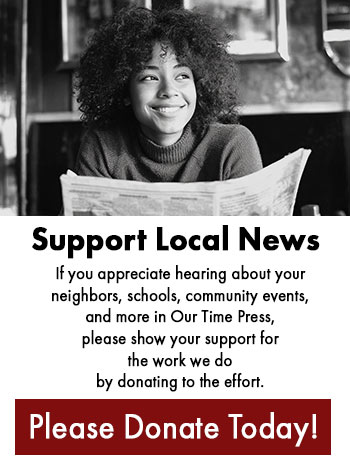By Mary Alice Miller
“We are already living in poverty-stricken conditions, said Lisa Kenner, President of NYCHA Van Dyke Houses. “If he cuts housing funding, what is that supposed to do to us? Can we come and live in the White House?”
Kenner was referring to the Trump administration’s 2026 budget proposal, which would cut approximately 44% from the Housing and Urban Development (HUD) budget, a $26.7 billion reduction in funding for rental assistance programs, including public housing and housing voucher programs like NYCHA. HUD would also face a 26% cut in federal employees.
“It would have a tremendous impact because we all are just barely keeping our heads above water to pay our rent and our bills,” said Arlene, who lives in a Section 8 building. “The worst thing that could possibly happen would be for the subsidy to be cut or reduced. It would be a tremendous struggle.”

The HUD proposal would limit the amount of time people can get federal rental subsidies to two years and add work requirements as a condition of funding. In addition, states would receive a block grant to distribute the housing funding at a time when housing is already in short supply.
“Rather than promoting self-sufficiency, proposals like time limits and work requirements impose unnecessary bureaucratic barriers to obtaining and maintaining housing assistance, said Renee Willis, president and CEO of the National Low Income Housing Coalition. “Most people who receive assistance are working but are not paid enough to afford rent.”
The National Low Income Housing Coalition has found a shortage of 7.1 million affordable and available homes nationwide, and only 1 in 4 households that qualify for HUD assistance receive it.
“It would have a devastating impact on families,” said Deborah Thrope, deputy director at the National Housing Law Project, millions of whom already face unaffordable rent.
The NYC Department of Housing Preservation and Development (HPD) gets 54 percent – almost $1 billion – of its operating budget from federal funding to provide housing vouchers, code enforcement, and emergency repair programs.
NYCHA, the nation’s largest and oldest public housing authority, is home to over 300,000 people across 244 developments. Its budget receives over 75 percent federal funding, with the balance mostly coming from tenants’ rental payments. That funding is largely used to support renovations and reconstruction of dangerous and aging buildings.
The funding cuts would be “a doomsday scenario for NYCHA, or for public housing,” said Public Housing Committee Chair and Council member Chris Banks.
According to a report from the NYC Comptroller’s Office, NYCHA’s latest budget, adopted in December 2023, includes $1.3 billion in federal operating subsidies (out of total revenues of $4.96 billion) for 2024 and $4.5 billion in federal capital funding through 2028 (more than half of the housing authority’s total capital budget of $8.2 billion).
The lack of funding would directly affect Section 9 housing, which is controlled solely by NYCHA with money from outside the city’s budget, according to a recent report by the city comptroller.
This past Spring, the Trump administration held back at least $60 million in funding mainly intended for affordable housing developments nationwide. That funding was intended to go to small community development nonprofits in small grants to be used as seed funding for affordable housing projects.
At a time when new housing is desperately needed, the cuts have put developers in a quandary, making it harder to maintain and pay debt on new properties.
NYC administers the largest Section 8 program in the country. Since the enactment of the Housing and Community Development Act of 1978, Section 8 has provided housing assistance and vouchers to low—and moderate-income families renting in the private market.
According to a report from the Center on Budget and Policy Priorities (CBPP), 3 million people, including 1.5 million children, could lose housing support.
“We are facing a dire housing shortage paired with an affordability crisis, and the federal government is committed to making it even worse,” said Christine Quinn, President & Chief Executive Officer of WIN, the largest provider of family shelter and supportive housing in New York City.
“Last year, we witnessed the highest number of individuals experiencing homelessness, and the administration proposes to abandon effective, evidence-based strategies in favor of approaches that will precipitate a catastrophic surge in homelessness,” said Donald Whitehead, the Executive Director of the National Coalition for the Homeless.
Latesha, who rents an apartment in a Section 8 building with her children, said, “It would impact me a lot because it is hard for me already to pay my rent plus live, buy food, and everything else. That would be putting me and my children at risk for housing because where would I go and what would I do if I can barely afford housing now?”
The 2026 budget proposal must still pass through Congress. There will likely be proposed amendments and negotiations over funding levels taking place during the next few months.
The public is urged to contact their representatives and raise concerns about the potential impact on vulnerable populations, including the poor, working poor, disabled, veterans and homeless.


